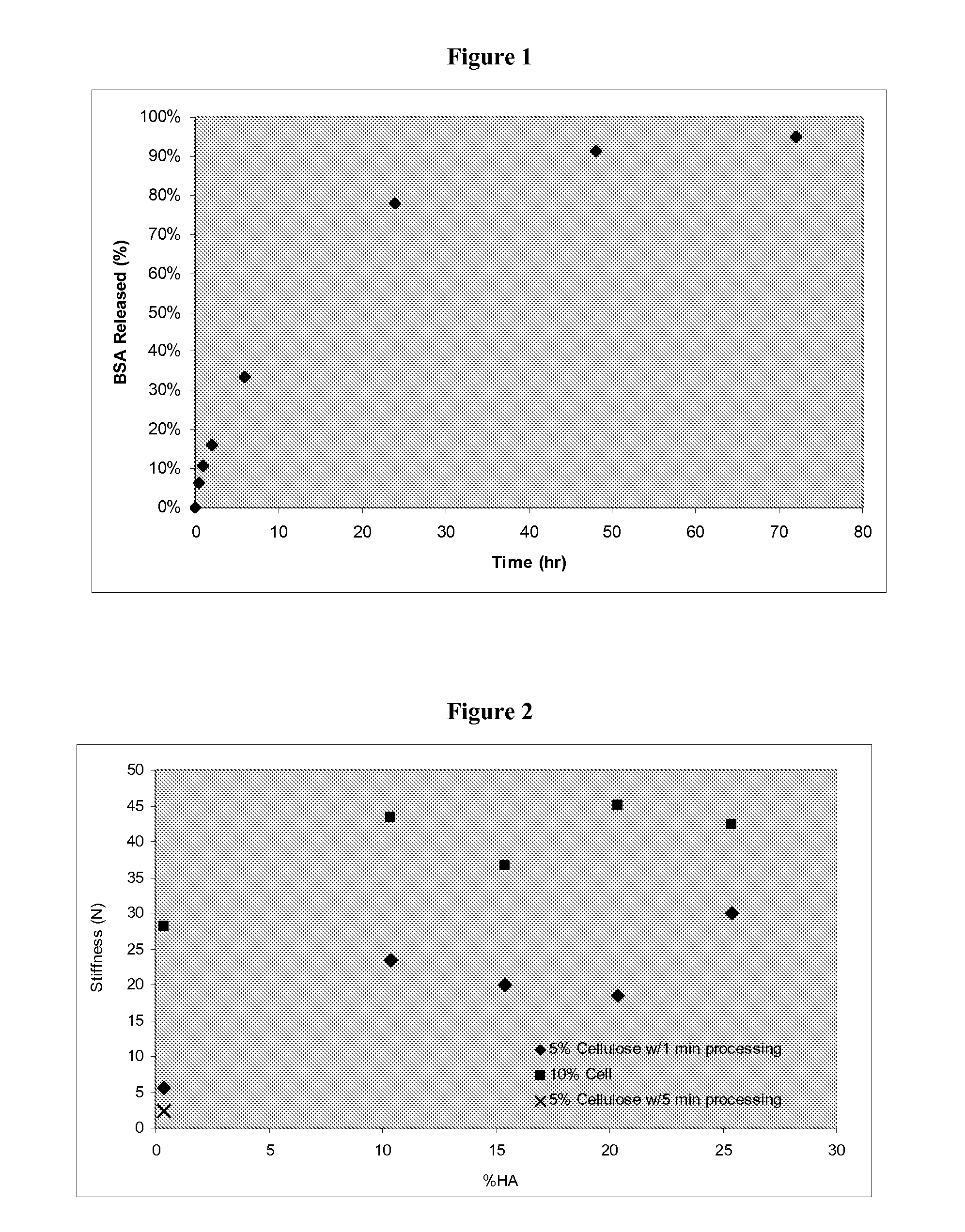Implantable microbial cellulose materials for hard tissue repair and regeneration
a technology of microbial cellulose and hard tissue, which is applied in the field of polysaccharide materials, can solve the problems of carries a degree of morbidity, carries the risk of disease transmission from graft to host, and materials carry the risk of disease transmission from donor to hos
- Summary
- Abstract
- Description
- Claims
- Application Information
AI Technical Summary
Benefits of technology
Problems solved by technology
Method used
Image
Examples
example 1
Implantable Cellulose Preparation
[0045]To prepare the microbial cellulose of the invention, Acetobacter xylinum microorganisms are cultured in a bioreactor containing a liquid nutrient medium at 30 degrees Celsius at an initial pH of 3-6. The medium is based on sucrose or other carbohydrates.
[0046]The bioreactor is composed of a plastic box fitted with an airtight cover. Dimensions of the bioreactor measured 9 in×13 in. Aeration ports are made in the bioreactor that allows the proper oxygen level to be achieved.
[0047]The fermentation process under static conditions is allowed to progress for a period of about 10-14 days, during which the bacteria in the culture medium produce an intact cellulose pellicle. Once the media is expended, the fermentation is stopped and the pellicle removed from the bioreactor.
[0048]1. Processing and Depyrogenation Procedures
[0049]The excess medium contained in the pellicle is removed by mechanical compression prior to chemical cleaning and subsequent pro...
example 2
[0053]Material can be prepared the same as in Example 1, with the added step of soaking in a 1% solution of bovine serum albumin (BSA) for 24 hours. Following saturation in the BSA solution the sample is placed in a 0.9% saline solution of 20× the sample mass. Aliquots are removed from the solution at various time points to determine the BSA release profile. The BSA concentration is assessed via ultraviolet / visible spectrophotometry. FIG. 1 shows BSA was completely recovered following 72 hours in the saline solution indicating little to no binding of BSA to the cellulose.
example 3
[0054]Material can be prepared as per Example 1, however prior to packaging the material can be placed in a Waring Blender with additional water to form a paste. Once processed the material is dehydrated by straining and then packaged. The fiber size can be controlled by blending time to result in materials with different physical properties. Samples containing 5% cellulose were made with processing times of one and five minutes. Stiffness testing was performed with a UNITED Tensile Tester using the circular bend procedure (ASTM Test Method D 4032). Samples were formed into discs with a diameter of between 3 and 4 cm with a thickness of between 5 and 7 mm. Stiffness values for one and five minutes processing were 5.6±1.7 and 2.3±0.7N, respectively, suggesting larger fiber sizes result in a more cohesive material.
PUM
| Property | Measurement | Unit |
|---|---|---|
| Young's modulus | aaaaa | aaaaa |
| thickness | aaaaa | aaaaa |
| thickness | aaaaa | aaaaa |
Abstract
Description
Claims
Application Information
 Login to View More
Login to View More - R&D
- Intellectual Property
- Life Sciences
- Materials
- Tech Scout
- Unparalleled Data Quality
- Higher Quality Content
- 60% Fewer Hallucinations
Browse by: Latest US Patents, China's latest patents, Technical Efficacy Thesaurus, Application Domain, Technology Topic, Popular Technical Reports.
© 2025 PatSnap. All rights reserved.Legal|Privacy policy|Modern Slavery Act Transparency Statement|Sitemap|About US| Contact US: help@patsnap.com



